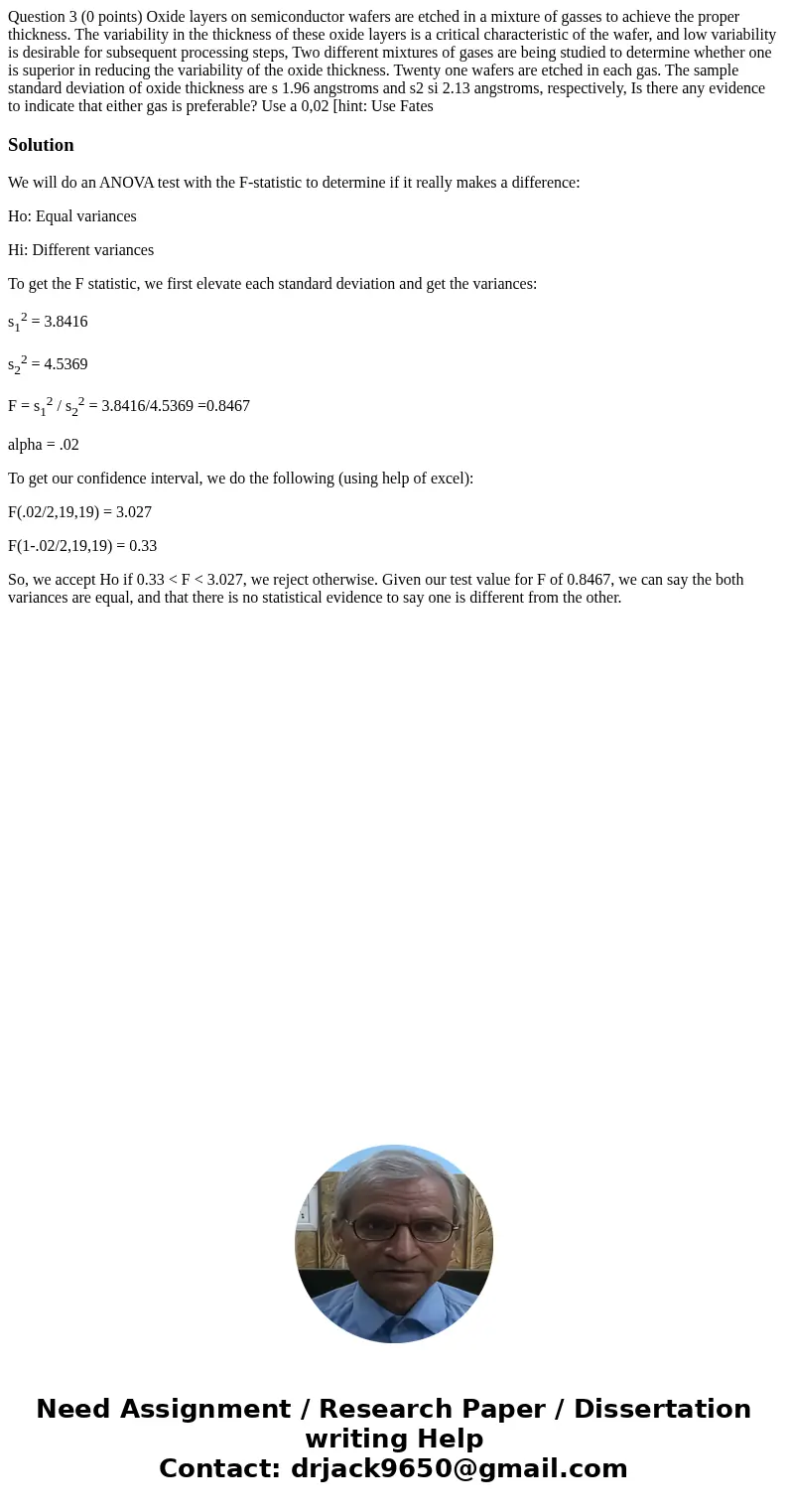Question 3 0 points Oxide layers on semiconductor wafers are
Question 3 (0 points) Oxide layers on semiconductor wafers are etched in a mixture of gasses to achieve the proper thickness. The variability in the thickness of these oxide layers is a critical characteristic of the wafer, and low variability is desirable for subsequent processing steps, Two different mixtures of gases are being studied to determine whether one is superior in reducing the variability of the oxide thickness. Twenty one wafers are etched in each gas. The sample standard deviation of oxide thickness are s 1.96 angstroms and s2 si 2.13 angstroms, respectively, Is there any evidence to indicate that either gas is preferable? Use a 0,02 [hint: Use Fates 
Solution
We will do an ANOVA test with the F-statistic to determine if it really makes a difference:
Ho: Equal variances
Hi: Different variances
To get the F statistic, we first elevate each standard deviation and get the variances:
s12 = 3.8416
s22 = 4.5369
F = s12 / s22 = 3.8416/4.5369 =0.8467
alpha = .02
To get our confidence interval, we do the following (using help of excel):
F(.02/2,19,19) = 3.027
F(1-.02/2,19,19) = 0.33
So, we accept Ho if 0.33 < F < 3.027, we reject otherwise. Given our test value for F of 0.8467, we can say the both variances are equal, and that there is no statistical evidence to say one is different from the other.
 Homework Sourse
Homework Sourse